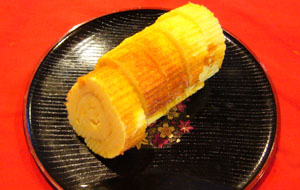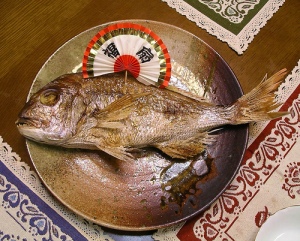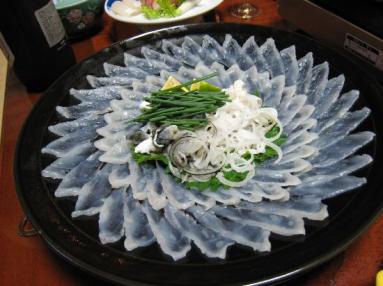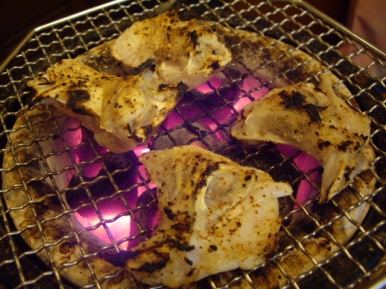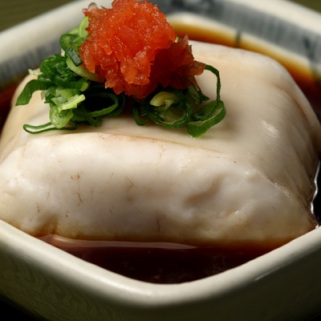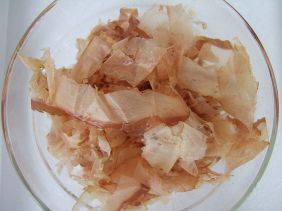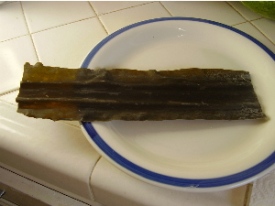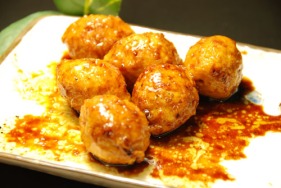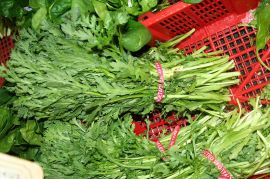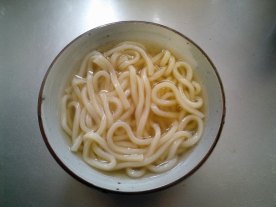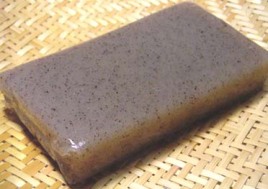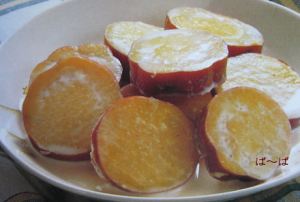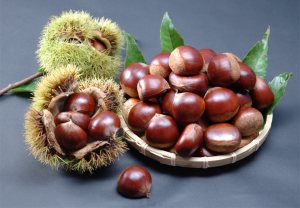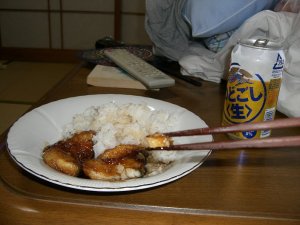(For more information on where these recipes came from and more Japanese cooking vocabulary, check out my previous posts for Yellowtail Teriyaki, Cashew Chicken, Roast Chinjao, and Tonkatsu!)
Did you read about Fall foods in Japan yet? If you have, you’ll notice that the first food listed is sweet potatoes. Have you ever wondered how to make them into a dessert, Japanese style? Read on and learn how!

スイートポテト – Sweet Potatoes
Yield: 4 servings
Ingredients:
| English |
Japanese |
| 400 g sweet potatoes (0.88 lb or 14.1 oz) |
さつまいも 400g |
| 32 g butter (about 2.5 Tbsp) |
バター 32g |
| 60 g granulated sugar (about 1/3 cup) |
グラニュー糖 60g |
| 4 Tbsp whole milk |
牛乳 大さじ4 |
| Dash of salt |
塩 少々 |
| 2 egg yolks (divided) |
卵黄 1個分+1個分 |
| 1 Tbsp dark rum |
ラム酒 大さじ1 |
| A little bit of water |
水 少々 |
Preparation:
Preheat oven to 180°C (356°F). Peel the sweet potatoes, then cut into rounds 3 cm in width. Place the sliced potatoes into a bowl of water as you cut them, then drain when ready to proceed to the next step.
Fill a saucepan with plenty of water, then put in the potatoes and heat until the water is boiling. When they can be easily pierced with a chopstick or fork, remove from heat and drain the hot water.
While the potatoes are still hot in the drained saucepan, quickly crush them until they are broken up into small pieces. Add the 32 g of butter and mix well. Then add the 4 Tbsp of milk, 60 g granulated sugar, and salt, then heat on low heat. While stirring constantly, let the moisture evaporate, and mash until the potatoes become smooth.
Quickly cool the potatoes by placing the hot saucepan into a bowl of ice water. When they have cooled a bit, add one of the egg yolks and 1 Tbsp rum, then mix well.
Lay down some parchment paper on a flat surface like a counter or table. Divide the sweet potato dough into four equal sections and place on the paper. Form each into a football-like shape by wrapping them in the parchment, then using a dish towel on the outside of the wrapper to manipulate the hot dough.
In a small bowl, put in the other egg yolk and add a little water, then mix. Place the football-shaped sweet potatoes on a baking sheet lined with parchment paper, then lightly brush the tops with the egg mixture.
Put the baking sheet on the top rack in the oven, which should be between 180-200°C (356-392°F). For two potato shapes, bake for 15-20 minutes. For 4, bake for 20-25 minutes. When the tops dry out after baking, take the potatoes out of the oven and brush with the egg mixture once more. Then put them back in the oven for 2-3 minutes. When the tops have browned, they are ready to be taken out of the oven and served.
(Note: Japanese dessert sweet potatoes are often served with a bit of honey on top.)
| Japanese |
Romaji |
Meaning |
| はかり |
Vocabulary:
hakari |
Scale (ie. Cooking scale) |
| ピーラー |
piiraa |
Vegetable peeler |
| オーブン |
oobun |
Oven |
| オーブンシート |
oobun shiito |
Parchment paper |
| ふきん |
fukin |
Dish towel; dish rag |
| ハケ |
hake |
Brush (here, refers to a cooking or pastry brush) |
| バター |
bataa |
Butter |
| 牛乳 |
gyuunyuu |
Milk |
| 卵黄 |
ranou |
Egg yolk(s) |
| たっぷり |
tappuri |
Fully; amply; generously |
| 細かい |
komakai |
Small; fine |
| つぶす |
tsubusu |
To crush; smash; mash |
| 氷水 |
koori mizu |
Ice water |
| 敷く |
shiku |
To spread; lay out |
| 生地 |
kiji |
Dough |
| 溶きほぐす |
toki-hogusu |
To scramble (an egg) |
| 表面 |
hyoumen |
The surface; face; ouside; exterior |
| 上段 |
joudan |
The upper row, tier, step, or rack |




